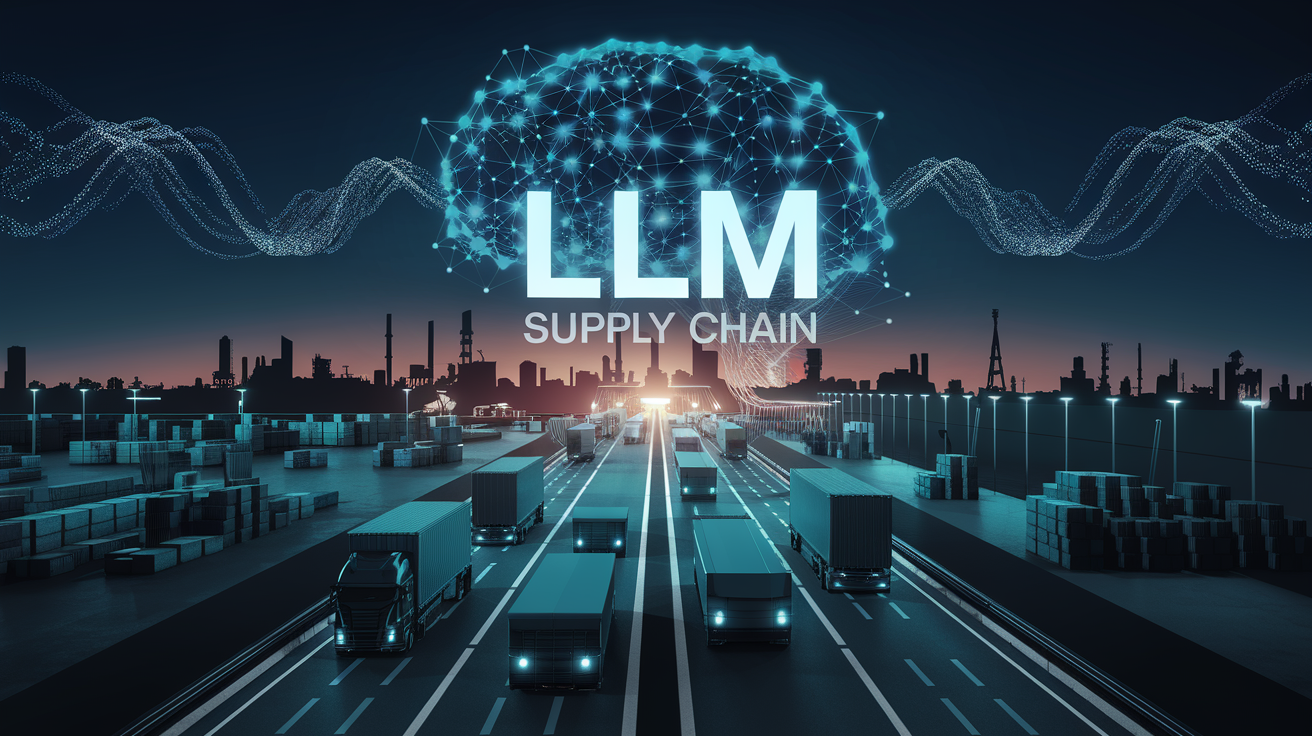Introduction
The year 2025 marks a pivotal moment for global supply chains. As volatility becomes the new normal, traditional approaches to supply chain management (SCM) are increasingly ineffective. The growing complexity of global networks, shifting customer expectations, and frequent disruptions are exposing cracks in old systems.
Digital transformation is no longer optional, it's a competitive necessity. Technologies like artificial intelligence (AI), automation, and large language models (LLMs) are rewriting the rules of supply chain engagement. Businesses that embrace this shift are gaining speed, transparency, and adaptability. Those that resist risk being left behind. This article explores the limitations of traditional SCM and how emerging technologies, especially LLMs are shaping the supply chains of the future.
Where Traditional Supply Chains Fall Short
1. Lack of Transparency
Many supply chains still function in silos, with limited visibility across key processes. When data isn’t shared seamlessly among suppliers, warehouses, and logistics teams, it leads to avoidable delays and inefficient responses. For example, a hold-up at a shipping port may not be communicated downstream until it’s too late to adjust. This fragmented view also hinders efforts to ensure ethical sourcing or sustainability compliance. (
Supply Chains Magazine)
2. Manual Processes Create Bottlenecks
From inventory checks to shipment scheduling, manual tasks still dominate many workflows. These methods slow operations, introduce human error, and limit scalability. Spreadsheets, phone calls, and paper-based approvals may work in calm periods, but they collapse under pressure during peak seasons or unexpected disruptions. (
Unite AI)
3. Departmental Disconnect
Poor synchronization between departments such as procurement, logistics, sales, and finance results in operational friction. If sales teams promise delivery timelines without syncing with warehouse capacity, or procurement places orders without forecasting updates, it can trigger a chain reaction of errors. The lack of integration between systems only magnifies these mismatches.
4. Inaccurate Demand Forecasting
Traditional forecasting models struggle to keep up with today’s fast-changing consumer behavior. They rely heavily on historical data and miss emerging trends. As a result, businesses either overstock slow-moving products or run out of popular items, both of which hurt profitability and customer satisfaction.
5. Limited Flexibility in Crisis
Finally, traditional supply chains lack the agility to respond to global events. Whether it’s a pandemic, trade war, or climate disaster, rigid systems can’t pivot fast enough. Businesses need adaptive systems that can detect changes early and respond dynamically, not a playbook built solely for stability. (
AI Multiple)
Technology Transforming Supply Chains in 2025
Digital technologies are now at the forefront of supply chain transformation. Let’s explore how they’re solving long-standing problems and building next-gen SCM capabilities.
1. Generative AI for Predictive Intelligence
Generative AI is enabling smarter, faster decision-making across the supply chain. It can ingest vast datasets from point-of-sale transactions and weather forecasts to social media signals and generate real-time insights. For instance, it can
predict demand spikes during events, recommend optimized delivery routes, or even suggest alternate suppliers in the face of disruptions. The result? More accurate planning, reduced waste, and better customer service.
2. Low Touch Planning with AI Automation
3. Enhancing Trust with Blockchain
Blockchain technology is providing the transparency that supply chains have long lacked. With a decentralized and tamper-proof ledger, stakeholders can
track every transaction across sourcing, production, logistics, and delivery. This transparency is particularly valuable for industries requiring end-to-end traceability, like food, pharmaceuticals, or luxury goods. For example, consumers can now scan a QR code to see where a product was made, shipped, and stored—all in seconds.
4. Fast Innovation with Low-Code Platforms
Low-code platforms are democratizing supply chain innovation. These tools allow non-technical users to
build applications, dashboards, or automations with minimal coding skills. Operations teams can now create custom alerts for delivery delays, build supplier scoring tools, or automate compliance reporting, all without waiting for IT. This flexibility empowers teams to quickly adapt to evolving business needs.
How LLMs Are Elevating Supply Chain Efficiency
LLMs are uniquely suited to the complexities of modern supply chains. Their ability to process natural language, summarize documents, and connect data points is unlocking new levels of productivity and intelligence.
1. Smarter Knowledge Access
In most organizations, critical supply chain knowledge is scattered across manuals, PDFs, contracts, and legacy systems. LLMs enable teams to
retrieve this information using simple, conversational queries. For example, a user can ask, “What’s the lead time for Vendor X?” or “Where are we sourcing cobalt for battery packs?” and get instant answers. This drastically reduces time spent on document hunting and improves decision speed.
2. Streamlining Supplier Communication
Managing dozens or hundreds of suppliers is a major challenge. LLMs can draft routine messages, summarize long email threads, or highlight key clauses in supplier contracts. They can even
flag inconsistencies between contracts and actual delivery terms. This not only enhances clarity but also reduces the workload on procurement and legal teams.
3. Context-Aware Forecasting
Traditional forecasting tools typically rely on internal sales data alone. LLMs, however, incorporate contextual signals from news, weather, and consumer sentiment. A sudden cold snap in the Northeast? The model can recommend ramping up shipments of heaters and winter apparel. By synthesizing external and internal data, LLMs help businesses
respond faster and more accurately to real-world changes.Conclusion: The Future Is Intelligent and Agile
As we move deeper into 2025, the future of supply chain management is being defined by intelligence, adaptability, and automation. Traditional SCM methods, while foundational, are no longer enough to meet the demands of a volatile world.
The next generation of supply chains won’t just move goods, they’ll think, adapt, and evolve. And in doing so, they’ll redefine what operational excellence looks like.
Facilitating AI Integration with Pacific Data Integrators (PDI)
Integrating AI and Large Language Models (LLMs) into supply chain management can seem daunting, but with Pacific Data Integrators (PDI), it becomes a streamlined and supported journey. Partnering with PDI ensures a seamless transition and enduring success, turning challenges into opportunities. Discover how PDI's tailored retail solutions can transform your business by consulting with our experts today.
You can book a consultation today by visiting us at PDI.
Blog Post by PDI Marketing Team
Pacific Data Integrators Offers Unique Data Solutions Leveraging AI/ML, Large Language Models (Open AI: GPT-4, Meta: Llama2, Databricks: Dolly), Cloud, Data Management and Analytics Technologies, Helping Leading Organizations Solve Their Critical Business Challenges, Drive Data Driven Insights, Improve Decision-Making, and Achieve Business Objectives.






